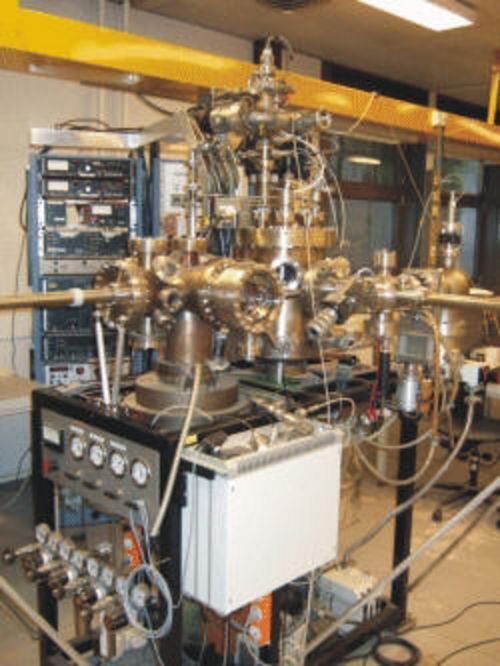Photograph of the LEIS apparatus "Minimobis" for surface composition analysis of thin films and refractory metals
 Figure 1
Figure 1
The UHV setup Minimobis (with a base pressure of 2x10−10 mbar) for low-energy ion scattering (LEIS) is devoted to the study of surface composition, structure and dynamics of solid surfaces. The ion beam (He+, Ne+, and Ar+ noble gas ions with an incident energy in the range from 0.8 keV to 5 keV) is oriented perpendicular to the surface, and the ions that are backscattered over an angle of 136° are detected by a series of micro-channel plates installed in a cylindrical mirror analyser (CMA). A common energy resolution is 1.5 - 2.0%.
A computer-controlled compact positioning mechanism is used to position a sample with an accuracy of 50 μm in the incident ion beam. The ion beam profile has a Gaussian shape with a FWHM of 0.4 mm. The sample holder is equipped with a compact heater capable to heat the sample up to 2500°C.
In addition to LEIS, Auger electron spectroscopy (AES) is used to look beyond the first atomic layer, and increase the information depth to a few monolayers. Structural information about the surface can be obtained by low-energy electron diffraction (LEED). Optionally, a reflectance difference spectroscopy (RDS) head can be mounted to one of the DN-40CF ports to study the adsorption of atoms or molecules on metal surfaces.
For more information please contact: Peter Bauer